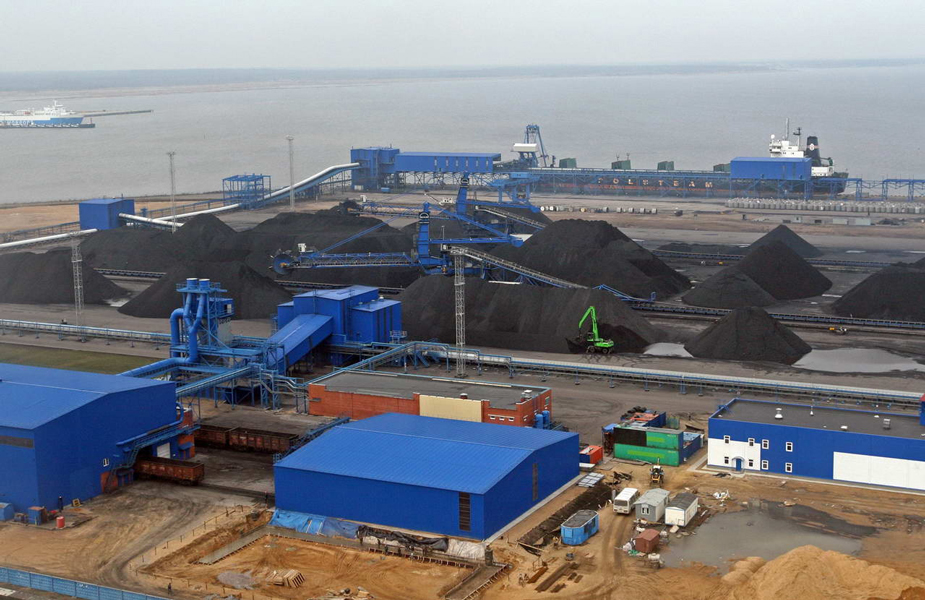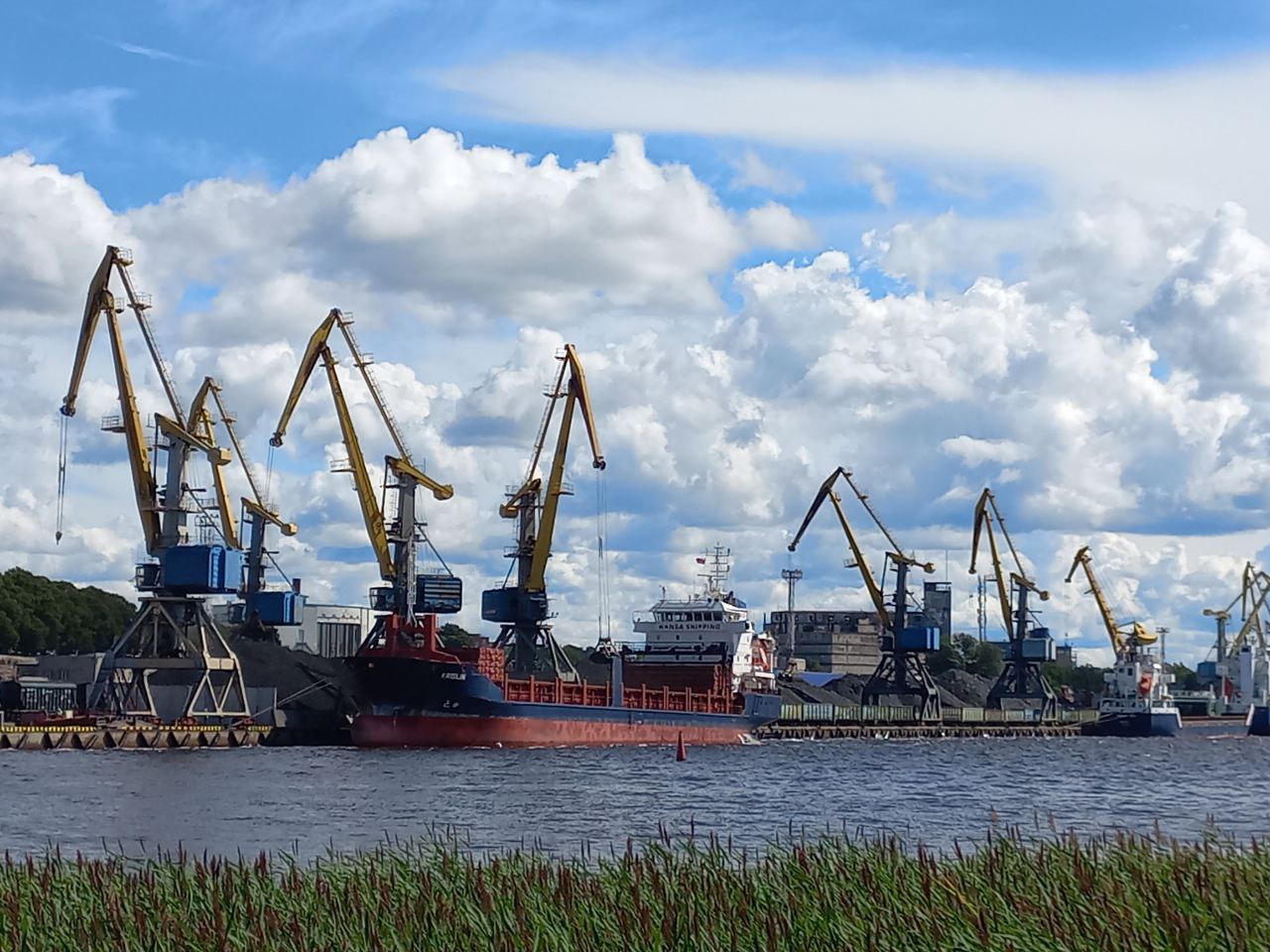
Exports of coal, one of Russia’s three major foreign trade cargoes, have started declining. After the EU built up its purchase in May, June saw a 48-pct fall Russian coal shipments with the port of Ust-Luga affected most of all.
Coal handling in Russian seaports showed a decrease in June. According to IAA PortNews, handling of dry bulk cargo in the first half of the year fell by 5.4%, at the coal terminals in Ust-Luga – by over 20%. CRU analysts say that the EU has cut seaborne imports of heating coal from Russia by 48% versus May to 1.7 million tonnes in June. That is a new low from 2019. In view of the halt in Russian gas supplies to Europe, Germany, Austria, France and the Netherlands have announced their plans to build up production of coal-based electricity.

In Q1’2022, coal and coke exports from Russia fell by 5.6% to 43.2 million tonnes, according to IAA PortNews statistics. The ports of the Baltic Basin account for 18% of exports (7.8 million tonnes in Q1’2022), Azov-Black Sea Basin — 22% (9.5 million tonnes), Far East Basin — 54% (23.4 million tonnes). The terminals of the Baltic Basin involved in handling of coal saw a reduction of dry bulk cargo throughput by 15.6%. However, Vyborg showed a positive dynamics of 2%. In 2021, it handled 417.9 thousand tonnes while in the first half of 2022 the result exceeded 427.7 thousand tonnes. In the Far East, coal handling at the Vanino terminals fell by 10-20% with one of the terminal having showed a 2-pct increase. Coal handling at the Nakhodka terminals decreased by 17% on the average. At the same time, the Vostochny terminals incr—Гased coal handling by 6%. A considerable growth of coal handling was registered at the terminals of the Azov-Black Sea Basin, up to 1.5 times at some facilities, to 15.2 million tonnes.
Despite combating climate change, European governments plan to burn more coal to boost energy stockpiles, according to the Weekly Report of Xclusiv Shipbrokers. For instance, Germany, Austria, France, and the Netherlands have announced plans to increase coal power generation due to Russian gas supplies being halted. However, those plans would only add 1.3% to EU emissions annually even if run hard, according to the report.
In Spring 2022, the EU adopted the fifth package of sanctions against Russia including an import ban on all forms of Russian coal (affects one fourth of all Russian coal exports, according to EC). The ban coming into effect on August 10 is expected to reduce the revenues of the Russian Federation by EUR 8 billion per year, expert say.
According to Statista’s analytics, key consumes of Russian coal over the recent years were China (29 million tonnes per year), S. Korea (23 million tonnes), Japan (21 million tonnes), Turkey (15 million tonnes), Taiwan (11 million tonnes), the Netherlands (10.5 million tonnes), Germany (10 million tonnes), Poland (10 million tonnes), Ukraine (9 million tonnes) and India (7.52 million tonnes). Thus, the European countries including Ukraine accounted for 40 million tonnes of Russian coal per year which makes about one third of all foreign supplies.
The main coal import terminals in the European Union (27) are: Rotterdam in the Netherlands (14.6 mln tonnes discharged in 1H 2022), Amsterdam Netherlands (6.8 mln tonnes), Hamburg Germany (3.0 mln tonnes), Gdansk Poland (3.0), Gijon Spain (2.8), Dunkirk France (1.9), Fos France (1.9), Ljmuiden Netherlands (1.6), Ghent Belgium (1.2), Vlissingen Netherlands (1.2), Plonce Croatia (1.2), Taranto Italy (1.1), Wilhelmshaven Germany (1.1), Koper Slovenia (1.0), Antwerp (1.0), Algeciras Spain (0.8).

Russia can redirect its seaborne exports of coal to the APR countries although this trend is still not evident basing on the half-year statistics. In the first quarter, supplies of Russian energy coal to India have surged 2.7 thousand times, year-on-year, to 573.2 thousand tonnes, according to the Indian Ministry of Industry. At the same time, Kpler says that 4.7 million tonnes of Russian coal was delivered to China in June versus 5.2 million tonnes in June 2021.
Major factor of the coal exports pivot is the expansion of the Eastern Operating Domain. In late June, Russian Railways and the business have balanced the distribution of volumes: the monopoly confirmed that it would ensure large volumes of coal transportation eastwards if coal is also transported westwards. To balance the railway infrastructure loading, the volumes of coal accepted for eastward transportation will be correlated with the westwards transportation volumes, according to Russian Railways.
More industry-related content is available on our social media pages: YouTube, Telegram, Twitter, Yandex Zen




